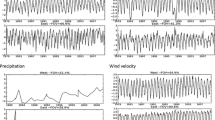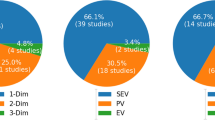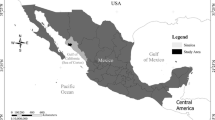Abstract
Vulnerability to climate change was evaluated for three different time periods: 1990, 2000, and 2010. Our objective was to discuss the scope of a multi-temporal assessment of vulnerability. The method used 55 indicators—with emphasis on the agricultural sector in Mexico—of which 27 were updated for the year 2010 and 33 were retrospectively estimated for the year 1990. The results show that in the 20-year study period, the exposure of the municipalities (and inhabitants) has increased, and sensitivity and adaptive capacity have decreased. The number of municipalities vulnerable to climate change declined over the 20-year period. We found that calculating vulnerability by adding exposure and sensitivity and subtracting adaptive capacity (E + S − AC) can lead to unintentional underestimation of total vulnerability. When rating vulnerability, care must be taken in what is reported: the results differ for the number of inhabitants versus the number of municipalities. Our previous published vulnerability evaluation was for the year 2000, so we wanted to evaluate the sensitivity of some variables and the vulnerability formula itself we used in that moment. It is possible to evaluate the vulnerability multi-temporally, which allows to evaluate the sensibility and calibration of the variables and indicators used and the reconsideration of their application.



Similar content being viewed by others
References
Aall C, Norland I (2005) Indicators for local-scale climate vulnerability assessments. University of Oslo: Western Norway Research Institute
Asensio C, Lozano F, Ortega E, Kikvidze Z (2015) Study on the effectiveness of an agricultural technique based on aeolian deposition, in a semiarid environment. Environ Eng Manag J 14(5):1143–1150
Banco Mundial (2017) Gasto público en educación, total (% del PIB). Retrieved April 2, 2017, from http://datos.bancomundial.org/indicador/SE.XPD.TOTL.GD.ZS?locations=MX
Beddington JR, Asadazzama M, Clark M, Fernández A, Guillou M, Jahn M, … Wakhungu J (2012) Achieving food security in the face of climate change. CGIAR Research Program on Climate Change, Agriculture and Food Security (CCAFS)
Bouroncle C, Imbach P, Rodríguez-Sánchez B, Medellín C, Martinez-Valle A, Läderach P (2017) Mapping climate change adaptive capacity and vulnerability of smallholder agricultural livelihoods in Central America: ranking and descriptive approaches to support adaptation strategies. Clim Chang 141(1):123–137. https://doi.org/10.1007/s10584-016-1792-0
CDI-INEGI (2006) Indicadores sociodemográficos de la población indígena 2000–2005. Ciudad de México: Comisión Nacional para el Desarrollo de los Pueblos Indígenas. Retrieved from http://www.cdi.gob.mx/
CENAPRED (2014) Inundaciones (1st ed.). Ciudad de México. Retrieved from http://www.cenapred.gob.mx/es/Publicaciones/archivos/3-FASCCULOINUNDACIONES.PDF
CENAPRED (2016) Base de datos sobre declaratorias de emergencia, desastre y contingencia climática de 2000 a 2016. Retrieved from www.atlasnacionalderiesgos.gob.mx/archivo/escargas.html
CONAPO (2012) Índice de marginación por entidad federativa y municipio 2010. (CONAPO, Ed.) (1st ed.). Mexico, DF. Retrieved from www.gob.mx/conapo/
CONEVAL (2014) Evolución de la pobreza por la dimensión de ingreso, 1992–2014. Con base en las ENIGH de 1992 a 2014 y el MCS-ENIGH 2008–2014. Retrieved January 1, 2016, from http://www.coneval.org.mx/Medicion/EDP/Paginas/Evolucion-de-las-dimensiones-de-la-pobreza-1990-2014-.aspx
Desinventar (2015) Sistema de inventario de efectos de desastres. Retrieved July 1, 2015, from https://online.desinventar.org
Donatti CI, Harvey CA, Martinez-Rodriguez MR, Vignola R, Rodriguez CM (2017) What information do policy makers need to develop climate adaptation plans for smallholder farmers? The case of Central America and Mexico. Clim Chang 141(1):107–121. https://doi.org/10.1007/s10584-016-1787-x
Downing TE, Butterfield R, Cohen S, Huq S, Moss R, Rahman A, … Stephen L (2001) Vulnerability indices: climate change impacts and adaptations. (U. N. E. Programme, Ed.), Policy Series 3. New York, USA.: United Nations
Fernández Eguiarte A, Zavala Hidalgo J, Romero Centeno R, Conde Álvarez C, Trejo Vázquez I (2015) Actualización de los escenarios de cambio climático para estudios de impactos, vulnerabilidad y adaptación. Ciudad de México. Retrieved from http://atlasclimatico.unam.mx/AECC/servmapas/
INAFED (2005) Sistema Nacional de Información Municipal. Retrieved from www.siglo.inafed.gob.mx/snim/
INEGI (1995) Memoria XI Censo General de Población y Vivienda 1990. (INEGI, Ed.) (1st ed.). Aguascalientes, México: INEGI. Retrieved from http://www.beta.inegi.org.mx/app/biblioteca/ficha.html?upc=702825490416
INEGI (1996) Uso de Suelo y Vegetación a escala 1:250000, Serie II (conjunto nacional). Retrieved from http://www.conabio.gob.mx/informacion/gis/
INEGI (2006) Resultados del Conteo de población y vivienda 2005. Instituto Nacional de Estadística Y Geografía
INEGI (2009) Censo Agrícola, Ganadero y Forestal 2007. Retrieved from http://www.inegi.org.mx/est/contenidos/proyectos/Agro/ca2007/Resultados_Agricola/default.aspx
INEGI (2011) Principales resultados por localidad y municipio. Censo de población y vivienda 2010. (2011th ed.). Aguascalientes, México: INEGI. Retrieved from www.inegi.org.mx
INEGI (2015) Principales resultados de la Encuesta Intercensal 2015. Estados Unidos Mexicanos. Aguascalientes, México: Instituto Nacional de Estadística y Geografía
INEGI (2016) Resultados de la encuesta nacional de ocupación y empleo. Aguascalientes, México: INEGI. Retrieved from http://www.inegi.org.mx/saladeprensa/boletines/2017/enoe_ie/enoe_ie2017_02.pdf
IPCC (2007) Summary for policymakers. In Parry ML, Canziani OF, Palutikof JP, Linden PJ, Hanson CE (Eds.) Climate change 2007: impacts, adaptation and vulnerability. Contribution of Working Group II to the Fourth Assessment Report of the Intergovernmental Panel on Climate Change. Cambridge University Press, Cambridge
IPCC (2013) IPCC Fifth Assessment Report (AR5) - the physical science basis. IPCC. doi:https://doi.org/10.1017/CBO9781107415324.004
Keiler M, Sailer R, Jörg P, Weber C, Fuchs S, Zischg A, Sauermoser S (2006) Avalanche risk assessment—a multi-temporal approach, results from Gal ur, Austria. Nat Hazards Earth Syst Sci 6:637–651. Retrieved from www.nat-hazards-earth-syst-sci.net/6/637/2006/
Lozano F, Soriano J, Martínez M, Asensio C (2013) The influence of blowing soil trapped by shrubs on fertility in Tabernas district (SE Spain). Land Degrad Dev 24:575–581. https://doi.org/10.1002/ldr.2186
Machado E, Ratick S (2017) Implications of indicator aggregation methods for global change vulnerability reduction efforts. Mitig Adapt Strateg Glob Chang :1–33. doi:https://doi.org/10.1007/s11027-017-9775-7
Mandal S, Satpati LN, Choudhury BU, Sadhu S (2017) Climate change vulnerability to agrarian ecosystem of small Island: evidence from Sagar Island, India. Theor Appl Climatol :1–14. doi:https://doi.org/10.1007/s00704-017-2098-5
Monnereau I, Mahon R, McConney P, Nurse L, Turner R, Vallès H (2017) The impact of methodological choices on the outcome of national-level climate change vulnerability assessments: an example from the global fisheries sector. Fish Fish. doi:https://doi.org/10.1111/faf.12199
Monterroso-Rivas A, Conde C, Gay C, Gómez-Díaz J, López J (2014) Two methods to assess vulnerability to climate change in the Mexican agricultural sector. Mitig Adapt Strateg Glob Chang 19(4):445–461. https://doi.org/10.1007/s11027-012-9442-y
SEMARNAT (2014) Programa Especial de Cambio Climático 2014–2018 (PECC). Diario Oficial de La Federación, DCCXXVII(28 abril 2014) :1–151
Singh Boori M, Eustáquio Amaro V (2011) Natural and eco-environmental vulnerability assessment through multi-temporal satellite data sets in Apodi valley region, Northeast Brazil. J Geogr Reg Plan 4(4), 216–230. Retrieved from http://www.academicjournals.org/JGRP
Acknowledgements
We are grateful to the Departamento de Suelos and CIRENAM at the Universidad Autónoma Chapingo; Centro de Ciencias de la Atmosfera at the Universidad Nacional Autónoma de México; and Instituto Nacional de Ecología y Cambio Climático (INECC), where the research was conducted. We gratefully acknowledge the comments and suggestions of the anonymous reviewers whose comments have substantially improved the paper.
Author information
Authors and Affiliations
Corresponding author
Rights and permissions
About this article
Cite this article
Monterroso-Rivas, A.I., Conde-Álvarez, A.C., Pérez-Damian, J.L. et al. Multi-temporal assessment of vulnerability to climate change: insights from the agricultural sector in Mexico. Climatic Change 147, 457–473 (2018). https://doi.org/10.1007/s10584-018-2157-7
Received:
Accepted:
Published:
Issue Date:
DOI: https://doi.org/10.1007/s10584-018-2157-7




